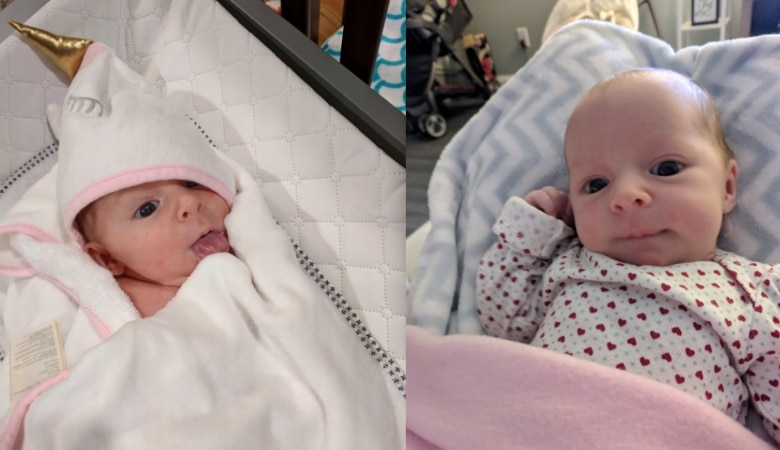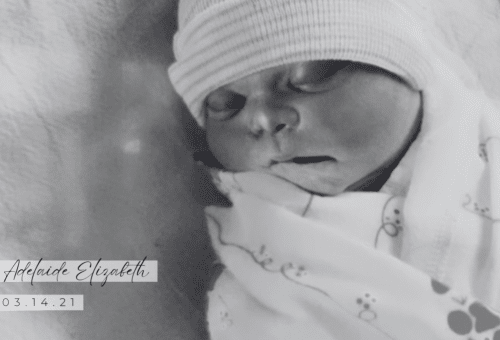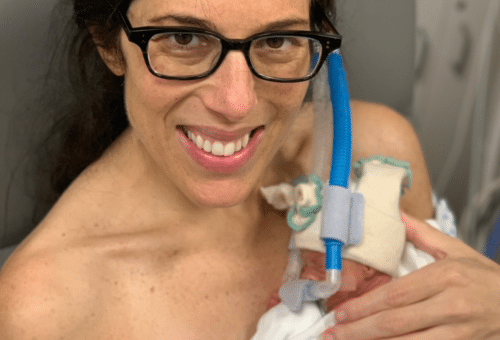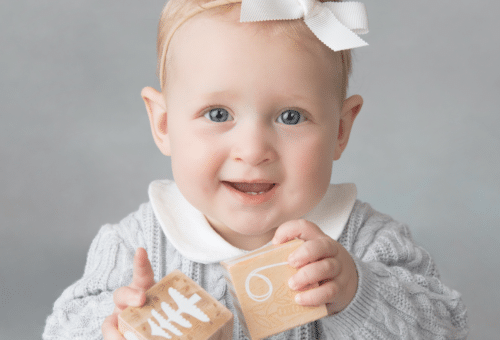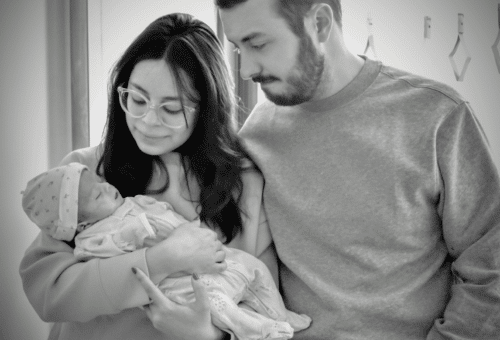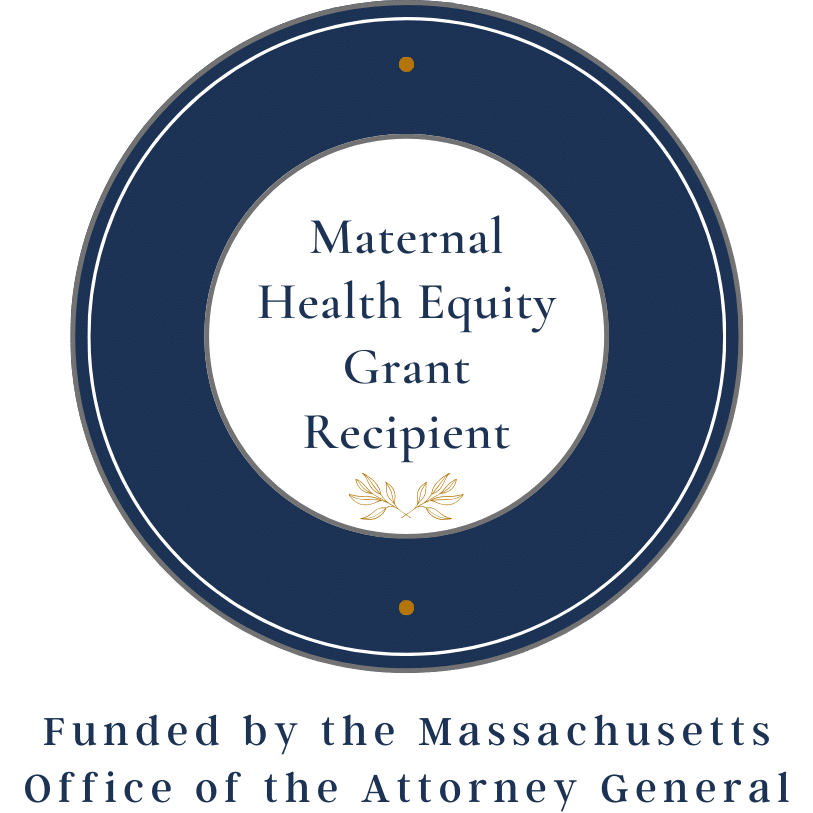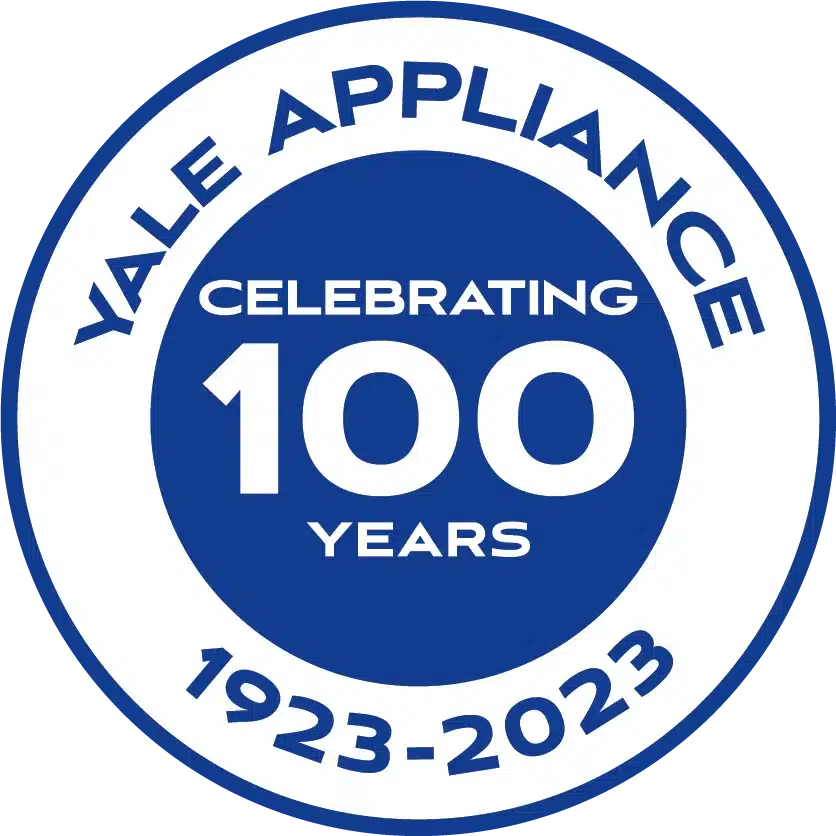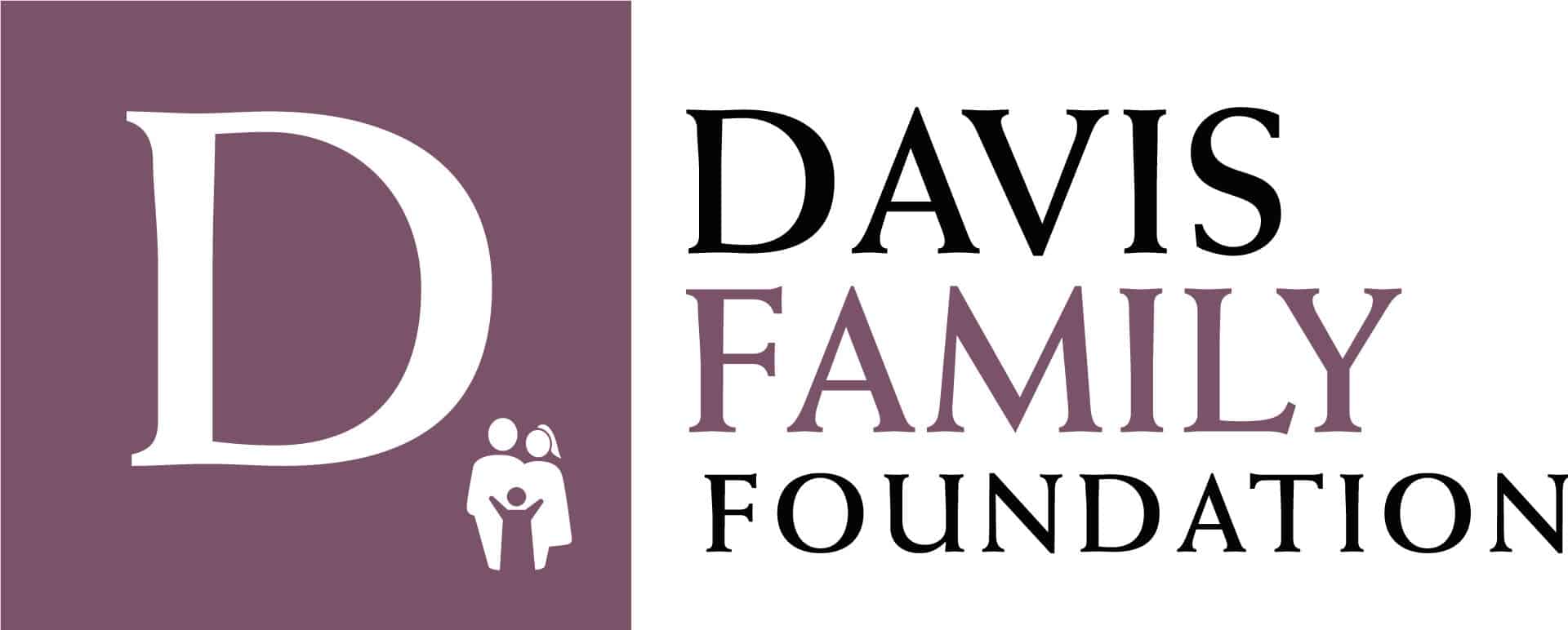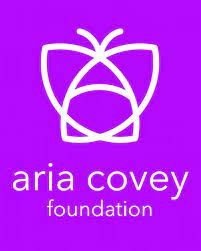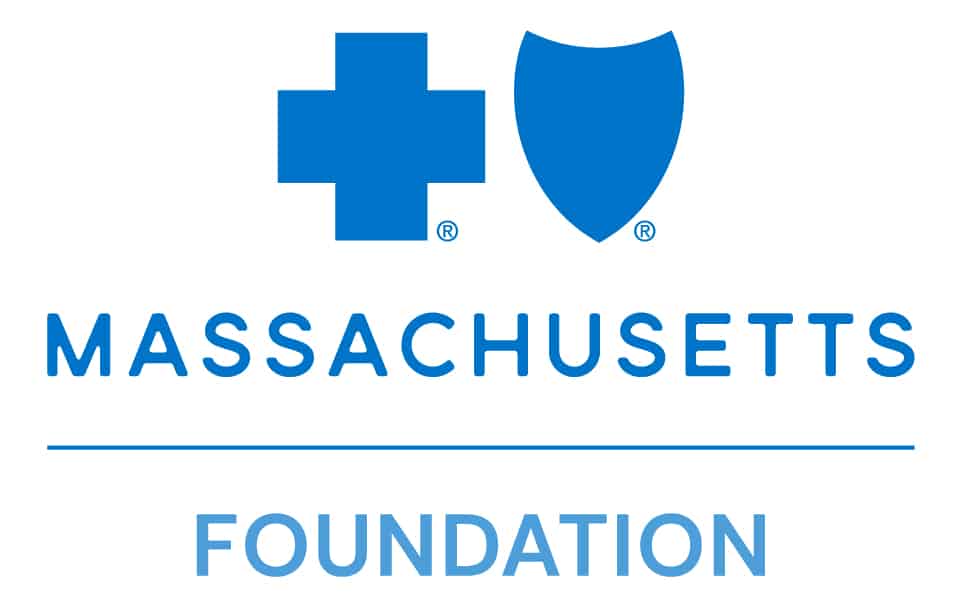Megan tells the story of how donor milk helped provide a bridge to breastfeeding after some unexpected situations during her daughter’s birth and early days.
By Megan Cicolello
Before my daughter, Emmeline, arrived on November 3, I read everything I could about pregnancy, delivery, and infancy, in general. As a behavior analyst, I felt arming myself with knowledge would give Emmeline the best advantage and help me transition into the maternal role. I read about options to reduce pain during delivery; I read about sleep schedules and soothing techniques; and I, of course, read that barring some rare circumstances, breast milk is best for infants.
Breech birth and C-section
My husband and I were thrown for a loop when we were informed that our baby was breech and would require a C-section. Well okay, I thought, we were just unlucky to be one of those pregnancies in which the baby never turns head down. I unexpectedly went into labor a few days before my scheduled C-section, but the surgery at Emerson Hospital went smoothly. As the nurses kept reassuring me through my delirium, Emmeline was perfectly healthy and was expected to thrive.
Except she didn’t. When weighed the next day, she had lost 10% of her weight. The nurses said it was something to watch, but not unexpected for a C-section baby. I nursed her constantly, but Emme seemed hungry no matter what I did.
Tongue tie and weight loss
After a few days of lactation consultants observing my feedings (everything looked fine at first glance), Emme was finally diagnosed with a tongue tie. Another unlucky break, I thought. By this point, she had lost 12% of her birth weight and I could count her ribs.
She had her tongue tie released the next day, and the doctor advised that I feed her every two hours. My milk was starting to come in, but I didn’t have enough for her. Her feedings already took over an hour, and when I wasn’t feeding her, I was pumping to get my production up. I was exhausted, still in pain from my C-section, and felt like I was failing my first test as a mother. That night, I cried in front of a stranger for the first time in at least a decade.
Receiving donor milk in the postpartum unit
That’s when the lactation consultant recommended using donor milk. I signed the waiver, and a few minutes later, Emme got her first round of supplemental milk. The donor milk made all the difference. My daughter was no longer crying after feedings, and she started gaining weight. I gained back my sanity. Within two weeks, Emme regained her birth weight and is now doing beautifully.
I am eternally grateful for the mothers who selflessly donated their milk, and to the nonprofit organization that made this all possible. My hope is that more women learn that donor milk is an option for them, if they need it. I am still adjusting to my new role as a mother, but one of the first things I learned is even if you read everything you can about infants, your experience will be unique and unexpected. I am so glad that Mothers’ Milk Bank Northeast was there to help when my unexpected situation arose. We couldn’t have gotten through Emme’s first two weeks without them!
